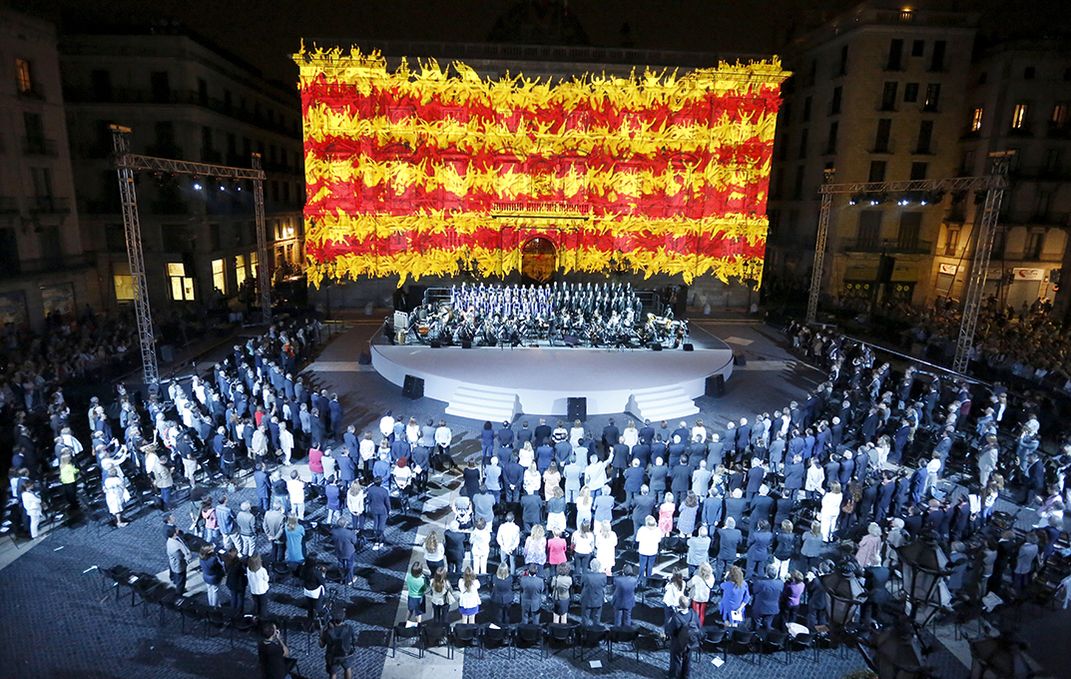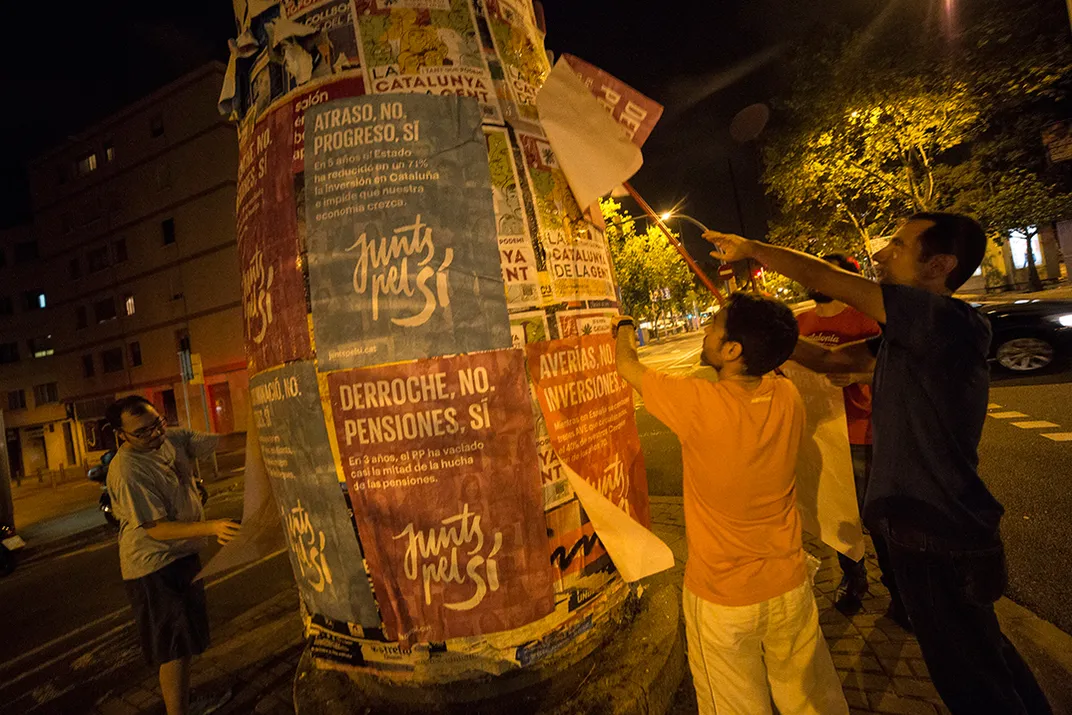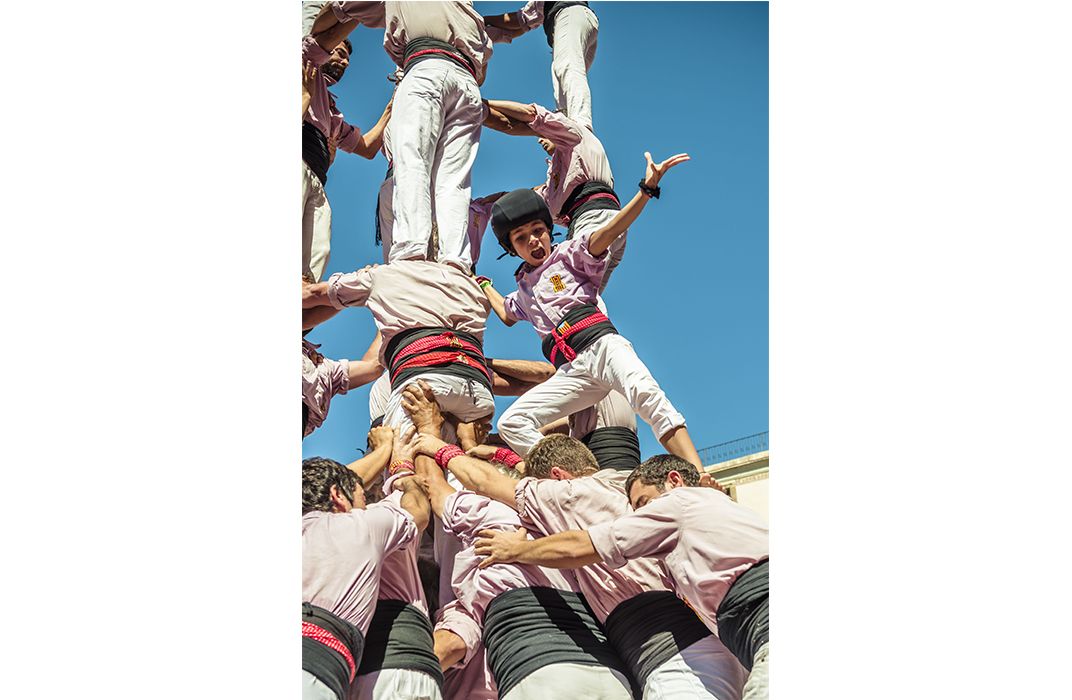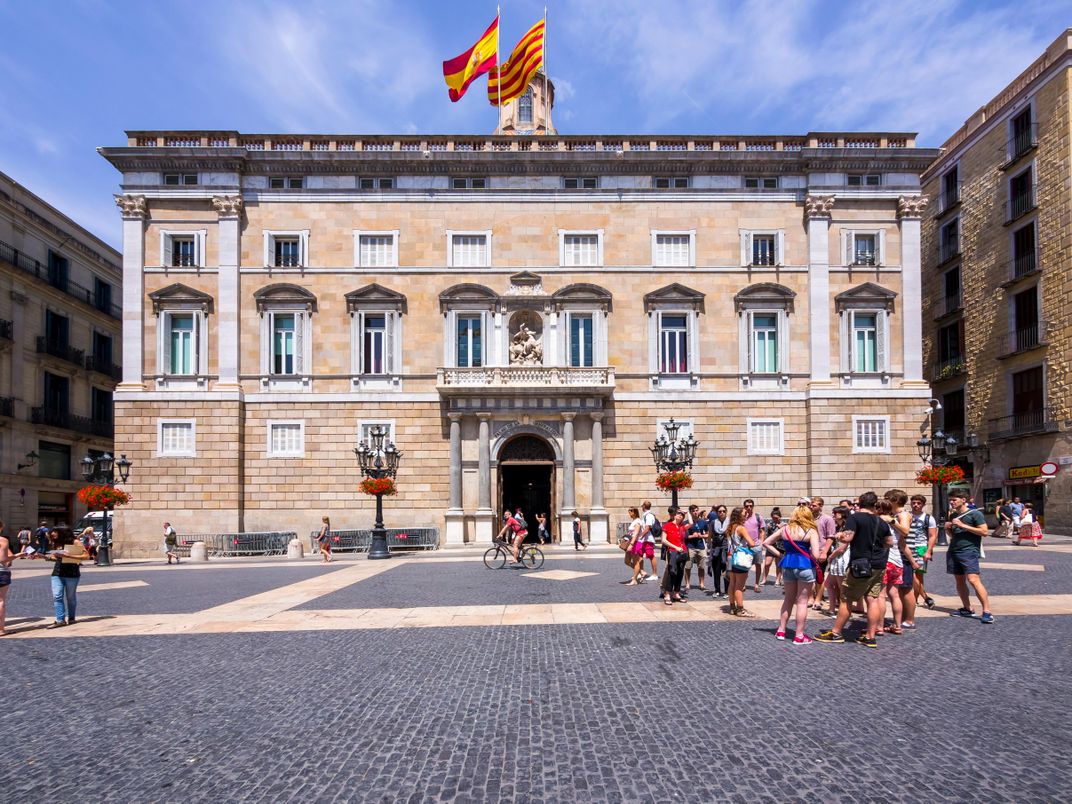Will Catalan Elections Allow an Old Nation to Become a New State In Europe?
Catalonians have long asserted they are not part of Spain, now the historical question of independence is on the ballot
/https://tf-cmsv2-smithsonianmag-media.s3.amazonaws.com/filer/a9/6a/a96a5883-2a77-41d5-9014-f4bf51969c3b/_mg_0121.jpg)
It is difficult to say when the current push for Catalan independence began, but this weekend’s regional elections have been cast as an imperfect plebiscite on whether or not the region in northeastern Spain should become an independent state. In 2006, voters overwhelmingly approved a Statute of Autonomy that recognized the region’s distinctive national character. However, when the Spanish Constitutional Court invalidated or re-wrote much of this statute in 2010, Catalans responded by renewing their efforts to build their own state within the European Union.
Each year, on September 11, a national day that commemorates their defeat by Spanish royal forces in 1714, the Catalans have held massive demonstrations in the streets of Barcelona. Last year, the regional government attempted to hold a referendum on independence, but this democratic impulse was ruled illegal by the central government. This year’s demonstration included very explicit references to independence from the Spanish state: One speaker who cited the American Declaration of Independence and said repeatedly, “We want our own independent state,” and other ended with “Long live the Catalan Republic!” The independence-oriented parties are expected to win a majority in the regional government, and all indications are that they will begin to move toward the creation of a new European state.

With a strong sense of their own independence based in a separate language and culture, Catalans have long asserted that they are not part of Spain. The idea that people belong together because of a shared sense of cultural identity or spirit dates back to the 18th century, when influential German poet and philosopher Johann Herder sowed the seeds of Romantic Nationalism. He argued that the language, traditions, and history of a people in a particular place create a strong bond that deserves our respect. These are the same elements that scholars now call cultural heritage, which does often represent fundamental beliefs and values. Historian Flocel Sabaté has just edited a new book of essays that explore the recognition of the term Catalonia, the specific territory that it named, and the evolving perceptions of the people’s identity in the region from Medieval times to the present.
Key to this shared sense of identity has been the Catalan language, and its strength has only grown in the last 150 years. In 1833, Catalan author Bonaventura Carles Aribau published his “Ode to the Homeland” lamenting the loss of the Catalan language and celebrating the landscape and local customs. Reprinted repeatedly in local newspapers, this poem seeded what was later called the Renaixença (Renaissance), a movement to reclaim and celebrate Catalans’ unique linguistic and cultural heritage. Barcelona’s city hall inaugurated “Floral Games” in 1859 to recognize Catalan literature and authors, and early efforts celebrated the different dialects of the language. In 1868, a group of intellectuals and entrepreneurs in Barcelona formed an association called Jove Catalunya (Young Catalonia) with the goal of supporting the growing literary and cultural movement. By the 1880, people were referring to catalanismo, and its efforts restored prestige to the use of the language in everyday life, literary production, and political discourse.
But Catalan language was official repressed under Francisco Franco’s dictatorship, which began in 1939. Castilian Spanish was declared the official language. It was illegal to use Catalan in public discourse, and so, for example, all church services were conducted in Spanish. Birth certificates had to have Spanish names, not Catalan ones, and the regime even changed street signs to remove traces of Catalan. At the same time scouting and hiking clubs became tremendously popular, and young and old would explore Catalonia’s countryside and at the same time use the Catalan language. With the end of the dictatorship and the new constitution of 1978, Catalan became co-official with Spanish, and it is now taught in schools throughout the region.

Catalans also have a long tradition of participation in voluntary associations that have also nurtured the use of language in the sense of identity. Twentieth-century scouting mirrored an older movement from the mid-1800s, when the Excursionist Center of Catalonia organized outings that emphasized Catalan landscape, language, and culture. Similarly the folk dance called the sardana played a key role in the expression of Catalan identity for many years: The slow, methodical circle dance theoretically allows any number of people to join in, even if the complex steps and variations make entering the dance daunting to newcomers. Even today large groups gather in the cathedral plaza in central Barcelona to dance the sardana and thus express their strong sense of community as Catalans. The tradition of building of human towers called castells is also a major part of local culture, not found anywhere else in the world.

These associations have also welcomed immigrants from other parts of Spain beginning in the 1920s and other countries more recently, providing an accessible and humane context for newcomers to begin to participate in Catalan culture and learn the Catalan language. These large group activities provide a strong emotional experience of belonging and connection, and many activists report experiencing “indescribable feeling” when they attend the massive protests that have been a hallmark of the current push for political autonomy.
Physical heritage also preserves the story of Catalonia’s independent history. Guifré el Pilós consolidated the royal House of Barecelona between 879 and 897, and his reign is often used to date the beginning of an independent Catalonia. Recent renovations of the Romanesque church of Sant Pau del Camp in Barcelona uncovered a tombstone documenting the death of his son, Guifré II, in 911, and the burial slab is now on display for all to see. Paintings show King Pere II granting privileges to the City of Barcelona in the Corts Catalanas, an early legislature that included representation from the commoners begun in 1283. A recent building project revealed a major archaeological site that dates to the 1714 seige of Barcelona by Spanish royal forces, and a dynamic new cultural center preserves and interprets the history of everyday life in “the city that withstood the siege of the troops of Phillip V until the surrender of September 11, 1714,” as the labels explain. Catalonia had sided with the Hapsburgs in the War of Succession, and when the Bourbon King Phillip V won, he promptly abolished all Catalan laws, special rights, and institutions. The Catalans have labored to preserve and present cultural heritage that anchors their sense of independence in a well-documented past.
/https://tf-cmsv2-smithsonianmag-media.s3.amazonaws.com/filer/30/ba/30baabfb-d675-46ba-9094-c888d5a1c91d/42-35959441web.jpg)
To take another example, the Palau of the Generalitat has housed the region’s government since the 1400s, when a delegation managed the affairs of the crown when the royal court was not in session. This Gothic palace has under gone numerous renovations over the centuries, but it remains a powerful symbol of Catalonia’s self-government. From the balcony of this building, Francesc Macià i Mas proclaimed the Catalan Republic in 1931 and became the first president of an autonomous Generalitat, as the regional government is still called. Similarly at the end of the dictatorship, the Generalitat returned from exile in France and again returned to the same building.
Today the current president of the Generalitat, Arthur Mas, campaigns for full autonomy for Catalonia from his office in this centuries-old seat of government. As several activitists have said, “Catalanismo may have begun as a cultural movement, but it has grown into a social and political movement as well.”

/https://tf-cmsv2-smithsonianmag-media.s3.amazonaws.com/accounts/headshot/Mason_Michael-12012.jpg)
/https://tf-cmsv2-smithsonianmag-media.s3.amazonaws.com/accounts/headshot/Mason_Michael-12012.jpg)